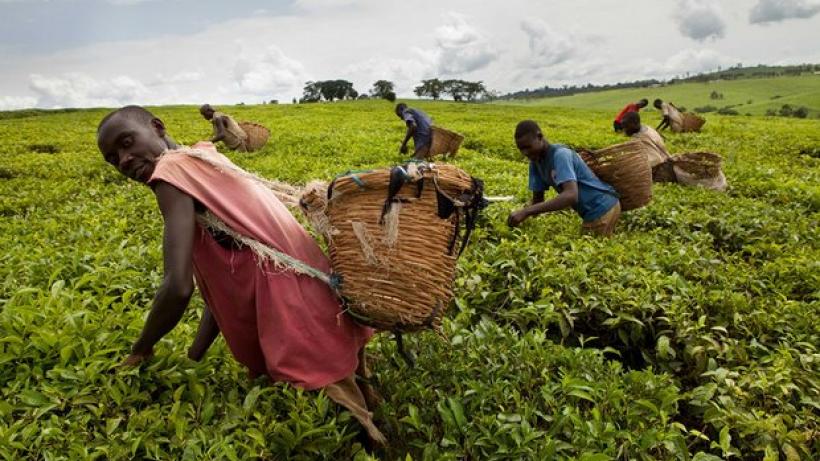
Regional value chains: Enhancing productivity in East Africa
In partnership with the IGC, Duke University’s Center on Globalization, Governance & Competitiveness (CGGC) reveals the potential for regional integration to strengthen value chains and improve productivity in Rwanda and Uganda.
Despite recent regional improvements in poverty reduction and economic growth rates in East Africa, firm productivity in the region remains low. This contrast creates uncertainty about whether the recent successes will persist without improvements in regional networks of production and trade. We use the Global Value Chains (GVC) framework to investigate the opportunities for and constraints to regional integration in three key sectors: dairy processing, maize production, and tourism. The GVC framework analyses sectors in terms of their value chains: the full network of activities that workers and firms fulfill to develop, produce, market, and distribute their products. Our geographic focus is primarily Rwanda and Uganda, with expansion where appropriate to capture important regional dynamics.
The drivers of activity in these sectors are distinct in Uganda versus Rwanda. In both dairy processing and maize production, Ugandan outputs in the production and aggregation segments of the value chain are used by Kenyan processors. Rwanda represents its own node in these value chains because much of its dairy and maize is consumed by one or two local domestic processors. European and North American consumers are the primary drivers of tourism demand, especially in Rwanda, and this demand gives the value chain a global scope.
Low productivity and government responses
In dairy processing and maize production, farmers lack finance and scale, and traders and produce collectors fail to communicate market signals. Human capacity is a related challenge, as many producers are unaware of the advantages of using higher-quality inputs and production technologies. In tourism, many actors lack the marketing and hospitality skills required to link with leading global firms.
Rwanda’s government takes an active approach to supporting value chains. At the firm level, this response often takes the form of public-private partnerships (PPPs) to bolster the capabilities of local businesses. At the policy level, the government uses supply-side measures such as the Crop Intensification Programme for increasing productivity at multiple levels of the agricultural value chain. Uganda’s government is less inclined to enter into partnerships to address value chain bottlenecks, instead relying on the private sector or NGOs in many cases. The underdeveloped nature of Ugandan institutions affords elite actors a degree of power that in some cases constrains development across sectors.
Regional integration: a way to increase productivity?
The East African Community (EAC) is an intergovernmental body supporting regional integration through a customs union and the pending establishment of a common market. While it has had successes, the EAC has yet to leverage the potential of regional integration fully. In tourism, low domestic and regional demand ultimately impairs the development of local tour operators. Many producers of dairy and maize are not aware of the EAC standards supporting trade. The dairy and maize value chains face pervasive capability constraints related to national systems of production and trade that are dominated by informal and unregulated smallholder actors. For these stakeholders, compliance with EAC standards either undermines competitiveness or yields benefits that are not adequately conveyed to consumers or producers. Nevertheless, there is potential for the further development of regional value chains. EAC countries can work together as a regional block to exploit the productive potential of these sectors.
Making the best of foreign direct investment
Recent dynamics in the US and EU dairy industries offer opportunities for East Africa to attract foreign direct investment (FDI) from leading global firms. The region’s maize value chain is an extensive production system in Uganda and a developed processing system in Kenya with recent FDI by companies such as Cargill. This value chain shows the possibility of a similar strategic slicing of value chain functions to take advantage of competitive advantages across the region. EAC countries can also pursue joint regional investment promotion strategies to ensure FDI provides an effective vehicle to develop capabilities. These strategies would be fruitful in areas such as innovation and product development, distribution and marketing, and supply chain constraints within and across countries.
From local to global
Addressing capability gaps is crucial to developing inclusive regional value chains in which local producers are linked and adequately compensated through integration in supply chains of emerging regional firms. These efforts should include regional integration plans making use of domestic and regional competitive advantages and trade institutions. The resulting productivity gains can help raise incomes and make value chains truly global by increasing FDI and attracting international demand.

